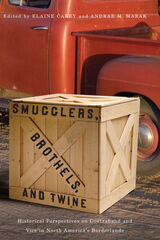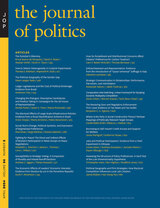2 books by Marak, Andrae M.

At the Border of Empires
The Tohono O'odham, Gender, and Assimilation, 1880-1934
Andrae M. Marak and Laura Tuennerman
University of Arizona Press, 2013
The story of the Tohono O’odham peoples offers an important account of assimilation. Bifurcated by a border demarcating Mexico and the United States that was imposed on them after the Gadsden Purchase in 1853, the Tohono O’odham lived at the edge of two empires. Although they were often invisible to the majority cultures of the region, they attracted the attention of reformers and government officials in the United States, who were determined to “assimilate” native peoples into “American society.” By focusing on gender norms and ideals in the assimilation of the Tohono O’odham, At the Border of Empires provides a lens for looking at both Native American history and broader societal ideas about femininity, masculinity, and empire around the turn of the twentieth century.
Beginning in the 1880s, the US government implemented programs to eliminate “vice” among the Tohono O’odham and to encourage the morals of the majority culture as the basis of a process of “Americanization.” During the next fifty years, tribal norms interacted with—sometimes conflicting with and sometimes reinforcing—those of the larger society in ways that significantly shaped both government policy and tribal experience. This book examines the mediation between cultures, the officials who sometimes developed policies based on personal beliefs and gender biases, and the native people whose lives were impacted as a result. These issues are brought into useful relief by comparing the experiences of the Tohono O’odham on two sides of a border that was, from a native perspective, totally arbitrary.
Beginning in the 1880s, the US government implemented programs to eliminate “vice” among the Tohono O’odham and to encourage the morals of the majority culture as the basis of a process of “Americanization.” During the next fifty years, tribal norms interacted with—sometimes conflicting with and sometimes reinforcing—those of the larger society in ways that significantly shaped both government policy and tribal experience. This book examines the mediation between cultures, the officials who sometimes developed policies based on personal beliefs and gender biases, and the native people whose lives were impacted as a result. These issues are brought into useful relief by comparing the experiences of the Tohono O’odham on two sides of a border that was, from a native perspective, totally arbitrary.
[more]

Smugglers, Brothels, and Twine
Historical Perspectives on Contraband and Vice in North America’s Borderlands
Edited by Elaine Carey and Andrae M. Marak
University of Arizona Press, 2011
In this volume the borders of North America serve as central locations for examining the consequences of globalization as it intersects with hegemonic spaces and ideas, national territorialism, and opportunities for—or restrictions on—mobility. The authors of the essays in this collection warn against falling victim to the myth of nation-states engaging in a valiant struggle against transnational flows of crime and vice. They take a long historical perspective, from Mesoamerican counterfeits of cacao beans used as currency to cattle rustling to human trafficking; from Canada’s and Mexico’s different approaches to the illegality of liquor in the United States during Prohibition to contemporary case studies of the transnational movement of people, crime, narcotics, vice, and even ideas.
By studying the historical flows of contraband and vice across North American borders, the contributors seek to bring a greater understanding of borderlanders, the actual agents of historical change who often remain on the periphery of most historical analyses that focus on the state or on policy.
To examine the political, economic, and social shifts resulting from the transnational movement of goods, people, and ideas, these contributions employ the analytical categories of race, class, modernity, and gender that underlie this evolution. Chapters focus on the ways power relations created opportunities for engaging in “deviance,” thus questioning the constructs of economic reality versus concepts of criminal behavior. Looking through the lens of transnational flows of contraband and vice, the authors develop a new understanding of nation, immigration, modernization, globalization, consumer society, and border culture.
By studying the historical flows of contraband and vice across North American borders, the contributors seek to bring a greater understanding of borderlanders, the actual agents of historical change who often remain on the periphery of most historical analyses that focus on the state or on policy.
To examine the political, economic, and social shifts resulting from the transnational movement of goods, people, and ideas, these contributions employ the analytical categories of race, class, modernity, and gender that underlie this evolution. Chapters focus on the ways power relations created opportunities for engaging in “deviance,” thus questioning the constructs of economic reality versus concepts of criminal behavior. Looking through the lens of transnational flows of contraband and vice, the authors develop a new understanding of nation, immigration, modernization, globalization, consumer society, and border culture.
[more]
READERS
Browse our collection.
PUBLISHERS
See BiblioVault's publisher services.
STUDENT SERVICES
Files for college accessibility offices.
UChicago Accessibility Resources
home | accessibility | search | about | contact us
BiblioVault ® 2001 - 2024
The University of Chicago Press









